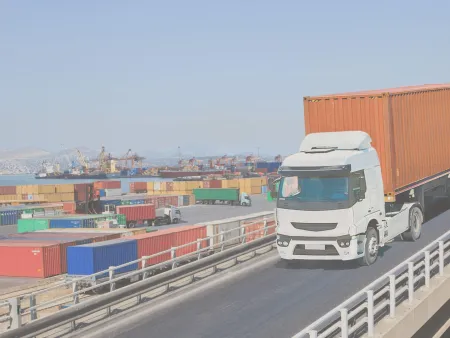Inbound freight and outbound freight are two different types of shipping that companies use for their products. Throughout this article, we will discuss the difference between inbound and outbound freight and give some examples of where each is commonly used.
Inbound Freight
Inbound freight involves goods shipped to a receiving location, most commonly used by companies who are receiving shipments of raw materials or resources that they need for production. This type of freight starts with an order and ends with the goods being received.
In certain instances, the supplier can be responsible for arranging the shipment, but this is not standard practice. The responsibility usually lies with the recipient of the shipment.
Some examples of shipments that come into a receiving location include:
- Raw materials for manufacturing
- Components used in the production of finished goods
- Inbound freight from international suppliers
- Products from another part of the world for resale
- Bulk items for shipping and storage
- Incoming shipments from suppliers or vendors.
These types of inbound freight shipments may require special handling and transportation rules, such as customs clearance or hazardous material regulations. In these cases, we can provide specialized services to ensure that the shipment is delivered safely and securely.
Outbound Freight
Outbound freight involves goods shipped from a sending location, most commonly used by companies who are shipping finished products or resources to customers or suppliers. In this case, the responsibility does usually lie with the sender of the shipment and not the recipient.
At times, it can be beneficial for companies to outsource this responsibility to a 3PL logistics service provider like Jansson, an independent agent of Landstar. Here, we can manage the entire process of outbound shipments from pickup, distribution, and delivery.
Shipments that come under the outbound freight umbrella include the following:
- Packaged goods that are ready for sale
- Inventories of finished products
- Bulk materials, such as building supplies or raw materials
- Components used in manufacturing
- Items required to fulfill customer orders.
Outbound freight can also include international shipments, which will require the same special handling and transportation rules as inbound freight.
Under these circumstances, it’s essential that the sender of the shipment understands the entire process and works with a reputable 3PL that can ensure that all documents are completed correctly and all regulations are met prior to shipping.
How Can We Help With Your Inbound and Outbound Freight?
As an independent agent of Landstar, Jansson can provide you with the knowledge and experience to make your logistics flow smoothly. Whether it’s inbound or outbound freight, we have the capabilities and expertise to get your items safely where they need to go.
Inbound freight is generally seen as goods traveling from a supplier/manufacturer to a distribution center or retail store. In contrast, outbound freight is typically seen as goods that are being shipped to customers, such as for online orders or for international shipments.
Additionally, in either type of freight, we offer flexible solutions tailored to the specific needs of our customers with varying levels of service from expedited delivery to more economical shipping options. Contact Jansson today and let’s talk about your shipping needs!




